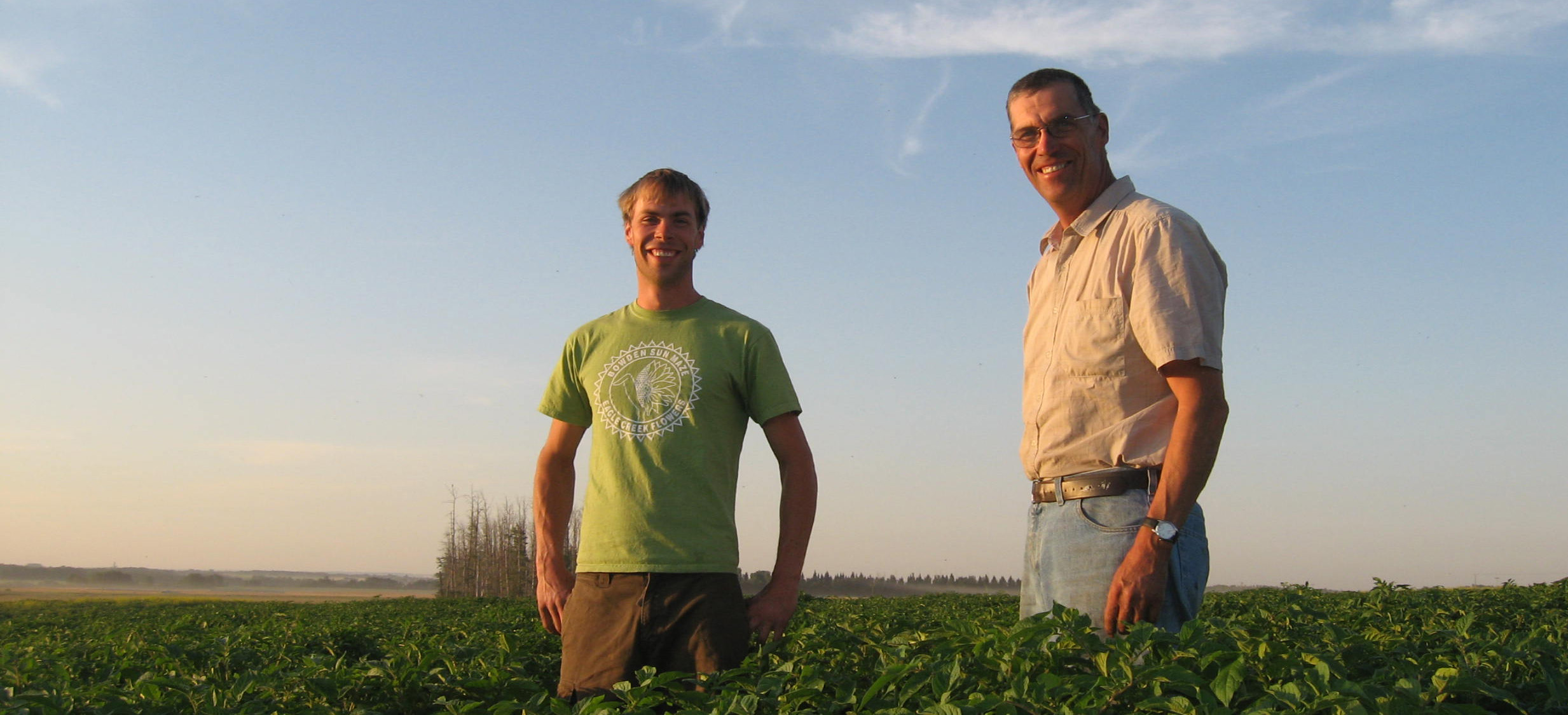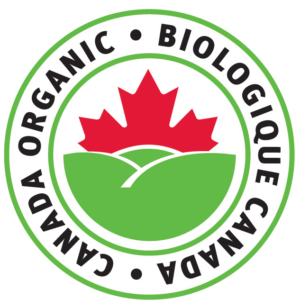Organic Certification
2015 marked the first year that we grew our potato crop completely without the use of any substances banned in Organic Production and our 2018 crops is the first with Organic Certification. Pro-Cert is the certifying body we work with to obtain Certification. We strive to farm in a way that creates a healthy ecosystem through crop diversity and long diverse rotations. Our potatoes are grown in a 5-6 year long rotation. Grain, hay, vegetables & cover crops are grown in the years land is not growing potatoes.
Who’s Potatoes do we sell?
We grow all but one of our varieties on our home farm close to Bowden, Alberta. We partner with Alberta’s only other Certified Organic potato farm (Sand Springs Ranch) growing Certified Seed to help ensure a more consistent supply from year to year.
Prior to organic transition we would supplement our supply with other high quality conventionally grown seed potatoes. Now with the decision to sell only seed potatoes which have been grown using Certified Organic practices, our options of sourcing seed is limited. Unfortunately this may result in years where a particular variety not being available, but we will work our hardest to maintain a good supply of your favorite varieties every year.
Where Is The Farm
Eagle Creek Seed Potatoes is operated by Eagle Creek Farms located in between Calgary and Edmonton at Bowden, Alberta. The Mills Family has farmed this land for over 100 years since settling the land in 1921. Although the Mills family was not the first to own the land, they are the only family to farm the land. The previous owner purchased the land in 1878 in hopes to find coal or minerals in a small hill on the property. Nothing but silt, brown soil and willows were found, so the mine was was soon abandoned. The land was not ideal for mining, so fortunately the combination of great soil and consistent rain fall, has been great for growing grain and vegetable crops.
Crop Rotation
We maintain a 5-6 year rotation in our potato fields for a couple reasons. Firstly is to avoid issues of disease buildup in our soils. Because potatoes are grown vegetatively, from an actual potato, disease can easily be carried from year to year or through plant material left in the field. Long rotations avoid the issues of disease surviving in the soil in the years between potato crops.
Nutrition is another key aspect of our long rotations. In the years between potatoes we will grow a mix of cereal grains, which often include multi species crops with peas or other legumes. For 2-3 years in the cycle cover crops will be grown. Typically a spring covercrop will be planted in May and terminated in Early to Mid July, followed by a fall cover crop which will be winter killed during our cold winters.
How do we control Weeds?
Lets be honest, we are never able to control all the weeds in our fields. With that said all the photos on this page were taken from our Organic Fields. A weed free field starts they year before which is always a cover crop in our rotation. By growing 2 cover crops the season before, which are terminated prior to any plants going to seed, we are able to eliminate most grassy weeds (ie volunteer cereal grains) If there are perennial weeds we will use cultivation in to disrupt the root development of these weeds during the termination of the cover crops.
During the growing season the best weed control is often aggressive hilling. Whether it is a PTO powered hiller, or a 3pt hitch cultivator with tines, the key is to toss enough dirt onto the sides and top of the hill to completely bury the weeds. Don’t worry about covering the potato plants as they are just emerging. Once they have had a day or two in the sunlight, a buried potato plant can push through 3-4 inches of dirt that is thrown onto during the hilling process. If you can smother the newly germinating weeds during the early stages of crop growth, the Potato canopy will soon cover the ground around the plant preventing any more weeds from germinating.
What About Insects
Fortunately for us, our farm is isolated from the larger potato growing regions in the Country resulting in no issues with insects eating out potatoes or transmitting diseases from other farms. Even with our isolation we implement production practices and a field layout to break up large plots of potatoes with strips of cover crops. Instead of having one closely planted 30 acre block, potatoes are spread out over our 640 acre Organic Farm into 4 growing areas separated by 500m – 1km. Between each of our nearly 100 plots of potatoes is a 6 foot gap planted to a multi-species cover crop. This system growing 30 acres of potatoes ends up taking over 50 acres. Insects and disease love tight rotation, of closely planted monocultures. It is our goal to do the opposite of this as much as possible within the limits of our farm boarders.
Depending on your growing region, techniques of including buffer strips, cover crops and avoiding concentrating your potatoes into one location can go a long way to control insect issues.




